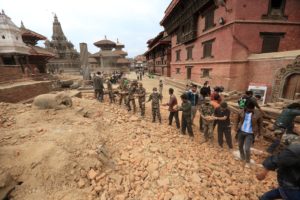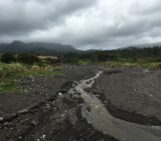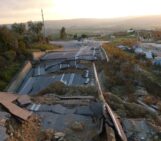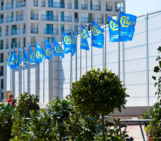
Earlier this year, the EGU Natural Hazards Division approved the addition of a new sub-division focused on the theme of ‘multi-hazards’. The Science Officers representing this sub-division, Joel Gill (British Geological Survey) and Marleen de Ruiter (IVM-VU Amsterdam), reflect on why this sub-division is necessary and how you can get involved.
Many regions are affected by multiple natural hazards, with hazards and/or their impacts not always occurring independently. The Sendai Framework for Disaster Risk Reduction, therefore, advocates for ‘multi-hazard’ approaches to disaster risk assessment and reduction. The UN defines ‘multi-hazard’ as follows:
“Multi-hazard means (1) the selection of multiple major hazards that the country faces, and (2) the specific contexts where hazardous events may occur simultaneously, cascadingly or cumulatively over time, and taking into account the potential interrelated effects” (UNDRR Terminology, 2017).
As outlined in this definition, a range of hazard relationships are possible. Two or more hazards may occur simultaneously in space and/or time, one hazard may trigger other hazards to occur or result in a set of cascading consequences, or multiple consecutive events may result in changes to exposure and/or vulnerability that ultimately shape risk.

Figure 1. Damage after the 2015 Mw = 7.8 earthquake in Nepal (Photo Credit: Laxmi Prasad Ngakhusi /UNDP Nepal).
Consider the Mw = 7.8 Nepal earthquake on 25 April 2015, for example (Figure 1). The earthquake is reported to have triggered 553 aftershocks with Mw > 4 in the following 45 days (Adhikari et al., 2015), together triggering snow avalanches and thousands of landslides, as well as increasing the probability of further landslides during monsoon rains (Bilham, 2015; Collins and Jibson, 2015). Triggered landslides also blocked rivers and resulted in upstream flooding (Collins and Jibson, 2015).
Following the 2015 earthquake, the EGU Natural Hazards and Seismology Divisions issued a press release stating that there is a “pressing need for an integrated analysis and management of different natural hazards, since single-event analyses do not fully quantify the enhanced risk of these combined events”. The addition of a new multi-hazards subdivision at EGU will help further integration of single-hazards understanding, building bridges across single-hazard disciplines, facilitating cross-disciplinary learning, dialogue, and networking. The multi-hazards sub-division enables further collaboration between the science community, policy makers, insurance, industry and aid organisations. This multi-sectoral emphasis will help to tailor disaster risk reduction measures to address the dynamic multi-hazard landscape that communities face.
Through activities at the EGU General Assembly, we will provide a space for the dissemination of research and innovation ideas relating to all aspects of multi-hazard risk. Themes of interest include: comparing multiple hazards; interaction mechanisms among different natural hazards; the methods, technologies and results associated with the physical modelling of multi-hazards, multi-hazard risk, and multi-hazard impacts; reducing the impacts of multi-hazard related disasters; spatial and temporal overlap of multiple hazards and its influence on exposure and vulnerability of elements at risk; uncertainties within multi-hazard cascades; and dynamic risk (e.g., due to climate change and its effects on multi-hazards, urbanisation, and evolving vulnerabilities).
Working closely with our colleagues across the Natural Hazards Sub-Divisions, we look forward to helping the broad natural hazards community to advance understanding of multi-hazards and contribute to societal aims of improving disaster risk management and risk reduction.
The EGU General Assembly 2020 public call-for-session-proposals is now open (deadline 5 September 2019), and we invite you to consider proposing a session within one of the Natural Hazard Sub-Divisions. If you’d like to discuss your ideas for a session within the new NH10 – Multi-Hazards Sub-Division: get in touch with Joel and Marleen.
References
Adhikari, L. B., Gautam, U. P., Koirala, B. P., Bhattarai, M., Kandel, T., Gupta, R. M., … and Hoste-Colomer, R. (2015). The aftershock sequence of the 2015 April 25 Gorkha–Nepal earthquake. Geophysical Supplements to the Monthly Notices of the Royal Astronomical Society, 203(3), 2119-2124. https://doi.org/10.1093/gji/ggv412
Bilham, R. (2015). Seismology: raising Kathmandu. Nature Geoscience, 8(8), 582. https://doi.org/10.1038/ngeo2498
Collins, B. D., and Jibson, R. W. (2015). Assessment of existing and potential landslide hazards resulting from the April 25, 2015 Gorkha, Nepal earthquake sequence (No. 2015-1142). US Geological Survey. https://doi.org/10.3133/ofr20151142




